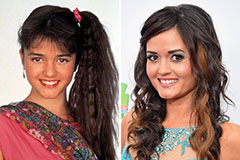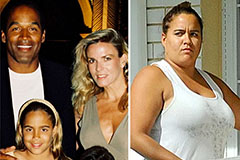Discover Ingenious Tools Developed for the Aesthetically Impaired
The growth of cutting-edge tools for the visually impaired stands for a substantial improvement in accessibility and freedom. Technologies such as smart glasses with AI capacities and mobile applications developed to give auditory descriptions are reshaping everyday experiences for customers.
Smart Glasses for Navigation
Smart glasses developed for navigation are revolutionizing the means aesthetically damaged individuals interact with their setting. These sophisticated gadgets use a combination of camera modern technology, expert system, and acoustic responses to give real-time info about environments. By utilizing obstacle discovery systems, wise glasses can notify customers to prospective hazards, making it possible for much safer mobility in both familiar and unfamiliar settings.
The combination of GPS innovation further boosts navigating capabilities, allowing customers to receive acoustic directions as they relocate. This hands-free method not only promotes independence yet also equips aesthetically damaged people to navigate city landscapes with enhanced self-confidence. Additionally, several wise glasses are geared up with attributes that identify sites and road indicators, offering contextual details that enhances the individual experience.
In addition, the development of these tools is continuously progressing, with companies working to boost the precision of object acknowledgment and broaden the array of navigational attributes. As smart glasses end up being a lot more easily accessible and affordable, they hold the potential to substantially change day-to-day live for aesthetically impaired individuals. Eventually, these ingenious devices stand for an essential step toward inclusivity, offering improved wheelchair and a higher feeling of autonomy for individuals browsing the world around them.

Mobile Apps for Daily Living
Just how can mobile applications enhance the every day lives of visually impaired people? Mobile apps are changing the method aesthetically damaged users navigate their settings, handle day-to-day tasks, and gain access to details. These applications provide necessary support via various capabilities, fostering self-reliance and enhancing lifestyle.
Numerous cutting-edge mobile applications are made specifically for everyday living. Apps like Be My Eyes link aesthetically damaged users with sighted volunteers using video calls, permitting them to obtain real-time assistance with tasks such as reading labels or browsing strange spaces. Seeing AI, created by Microsoft, makes use of man-made knowledge to explain environments, checked out text, and recognize things, successfully transforming a mobile phone into a powerful device for everyday support.
Additionally, navigating apps tailored for the aesthetically damaged, such as Aira and BlindSquare, provide audio-based directions and ecological info, making it possible for customers to traverse their surroundings safely and with confidence. Beyond navigating and instant support, mobile applications likewise support company and task monitoring, with functions that aid users establish pointers, develop to-do checklists, and track visits. In summary, mobile applications function as essential sources, empowering aesthetically damaged individuals to lead more independent and fulfilling lives.
Wearable Technologies for Assistance
Empowerment via innovation is progressively evident in the world of wearable tools developed to aid visually damaged people. These innovative tools incorporate flawlessly into life, enhancing navigating and providing essential comments to customers. Wise glasses outfitted with video cameras can read and acknowledge faces message out loud, permitting users to engage even more with confidence in professional and social settings.
One more notable development is using haptic responses systems in wearable tools. These systems utilize resonances or other tactile signals to communicate info concerning the customer's setting, such as barriers or changes in terrain, enhancing wheelchair and security. Wearable modern technologies additionally consist of wristbands that attach to smart devices, alerting users to notifications through subtle resonances, therefore boosting connection without dependence learn this here now on aesthetic hints.
As these innovations proceed to progress, they are not just boosting freedom for aesthetically damaged individuals but also fostering a greater feeling of incorporation in culture. By connecting the space between obstacles faced in day-to-day living and the possibility for autonomy, wearable innovations function as pivotal devices in the quest for equal rights and empowerment for those with aesthetic disabilities.
Sound Description Tools
Audio summary tools play a critical duty in improving availability for visually impaired people, giving them with the capacity to engage with aesthetic media. Braille displays and notetakers. These tools supply narrated summaries of essential aesthetic aspects in movies, television shows, optical eyeglasses and live efficiencies, making sure that users can totally comprehend the context and feelings conveyed via visuals
Sound description can be incorporated right into different systems, including streaming solutions, cinema testings, and live movie theater. Several prominent streaming solutions now consist of audio summary as an access function, permitting viewers to choose it easily. In addition to conventional media, specialized applications also exist, supplying audio summaries for art exhibitions, museums, and various other cultural events.
The effectiveness of audio description depends upon the ability of the narrators, who have to convey visual information succinctly without diminishing the original sound. Innovations in this field are likewise leading the way for even more personalized experiences, where individuals can change the degree of information and pacing according to their preferences.
Braille Innovations and Devices
Braille developments and devices have dramatically changed the way aesthetically impaired people communicate with text and information. Modern innovations have brought about the advancement of versatile devices that enhance literacy and independence among users. Significantly, Braille present innovations have actually progressed, enabling dynamic analysis experiences. These devices convert electronic text right into Braille, making it possible for users to access a substantial array of info on tablet computers, mobile phones, and computers.
Additionally, mobile Braille notetakers incorporate traditional Braille input with contemporary performances, helping with note-taking, scheduling, and file modifying on the move. Screen readers for the blind. These portable gadgets typically include text-to-speech capabilities, bridging the gap in between Braille and acoustic details
On top of that, innovative Braille printers have emerged, allowing users to generate Braille tags, papers, and academic materials effectively. This availability promotes greater participation in expert and academic settings, eventually promoting inclusivity.
Furthermore, study right into wise Braille technologies remains to broaden. Devices that include fabricated knowledge are being discovered to offer real-time navigating support and contextual info, enhancing the customer experience in diverse setups. Generally, these glasses with magnetic frames advancements reflect a commitment to encouraging aesthetically impaired people with technology, guaranteeing they can easily access and engage with the world around them.

Conclusion
The advancement of ingenious tools for the aesthetically impaired substantially enhances freedom and high quality of life. These innovations not just foster higher incorporation however additionally promote freedom in everyday tasks, eventually adding to a much more obtainable and equitable society for aesthetically damaged individuals.
As clever glasses become extra budget-friendly and accessible, they hold the prospective to significantly transform day-to-day life for aesthetically impaired individuals. Mobile applications are revolutionizing the means aesthetically impaired individuals browse their settings, manage everyday jobs, and accessibility info. Applications like Be My Eyes connect visually impaired customers with sighted volunteers via video phone calls, enabling them to obtain real-time support with jobs such as reading labels or browsing unknown areas.Furthermore, navigating apps tailored for the visually damaged, such as Aira and BlindSquare, provide audio-based instructions and ecological information, allowing individuals to traverse their environments securely and with confidence.The development of cutting-edge devices for the aesthetically damaged significantly enhances self-reliance and high quality of life.
 Mackenzie Rosman Then & Now!
Mackenzie Rosman Then & Now! Danica McKellar Then & Now!
Danica McKellar Then & Now! Sydney Simpson Then & Now!
Sydney Simpson Then & Now! Lisa Whelchel Then & Now!
Lisa Whelchel Then & Now! Rossy de Palma Then & Now!
Rossy de Palma Then & Now!